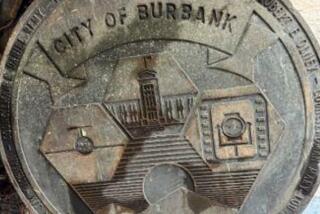New artifacts unearthed at old train station site
- Share via
Archaeologists have unearthed artifacts at the first train station to connect Los Angeles to the rest of the nation at the site of a state park under development near Chinatown, officials said Saturday.
Scientists have uncovered redwood beams used to build the foundation of the station’s turntable, which rotated trains between tracks. They also excavated artifacts from the station’s roundhouse, which housed and repaired locomotives, as well as the foundation for industrial shops.
The archaeologists knew from sonar that these artifacts were buried underneath the park. But this is the first time a full excavation has been done at these three sites.
More details are to be unveiled at a news conference scheduled for Tuesday at Los Angeles State Historic Park, a 32-acre site previously called the Cornfield.
The site, near Dodger Stadium, had been home to railroad tracks from 1875 to the 1990s, when the tracks were removed. The lot was to be converted into an industrial warehouse, but those plans faced opposition from activists who preferred a park.
The dispute ended when the state purchased the site for $36 million in 2001 and opened a temporary park in 2006, with plans underway to design the entire property.
When Southern Pacific Railroad’s River Station opened to passenger traffic in 1875, it was the terminus of the transcontinental rail line that ended in Los Angeles. Parks officials have previously described the site as the “Ellis Island of L.A.”
Chinese laborers who helped build the transcontinental railroad created Los Angeles’ original Chinatown near the rail yard. The site had picked up its Cornfield nickname from stalks of corn that sprouted from seeds that spilled from railroad cars pulling into Los Angeles in the 1870s.
The site also was home to the Pacific Hotel, which opened in 1879 and served “25-minute meals” to station passengers.
A line of recycled glass now marks the boundary of the hotel.
Leonard Pitt, a retired Cal State Northridge history professor who has been active in preserving the former rail yard, said he hopes that the rail yard’s history will be incorporated into the final design of the state park.
“This is a very historic place, this new park, and the railroad is certainly one of the really significant features of the park,” Pitt said.
--
More to Read
Sign up for Essential California
The most important California stories and recommendations in your inbox every morning.
You may occasionally receive promotional content from the Los Angeles Times.











